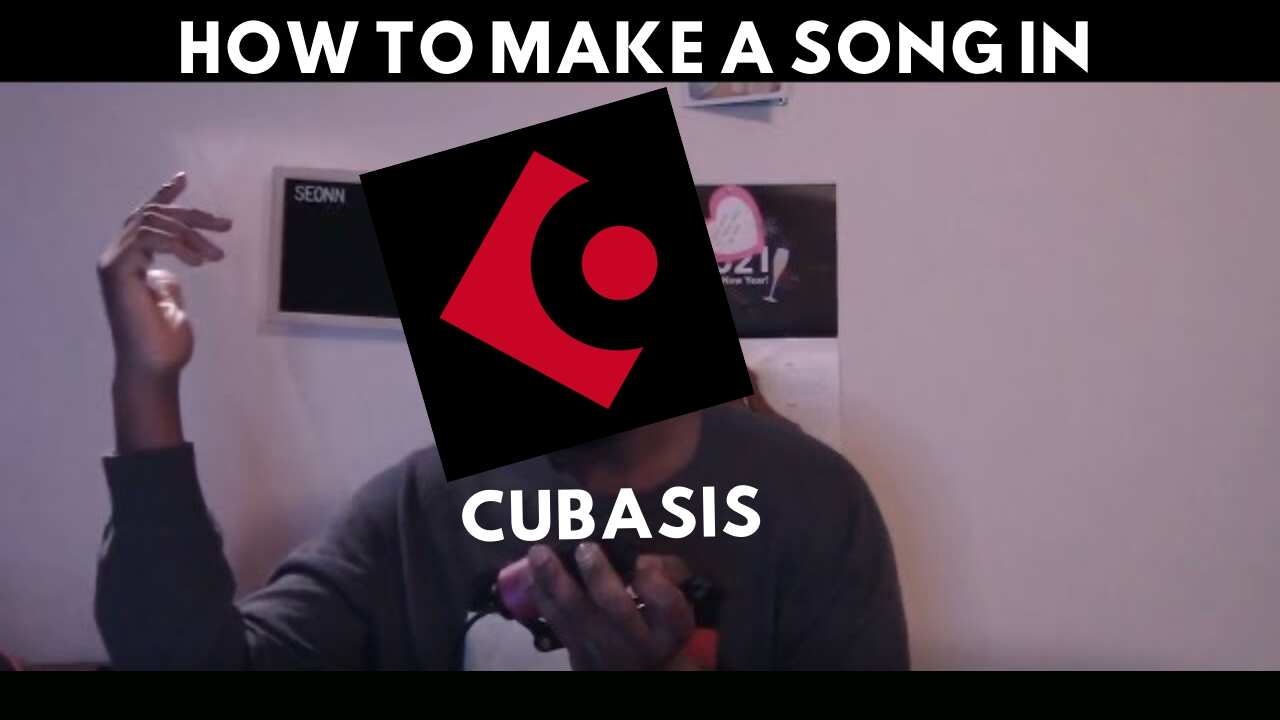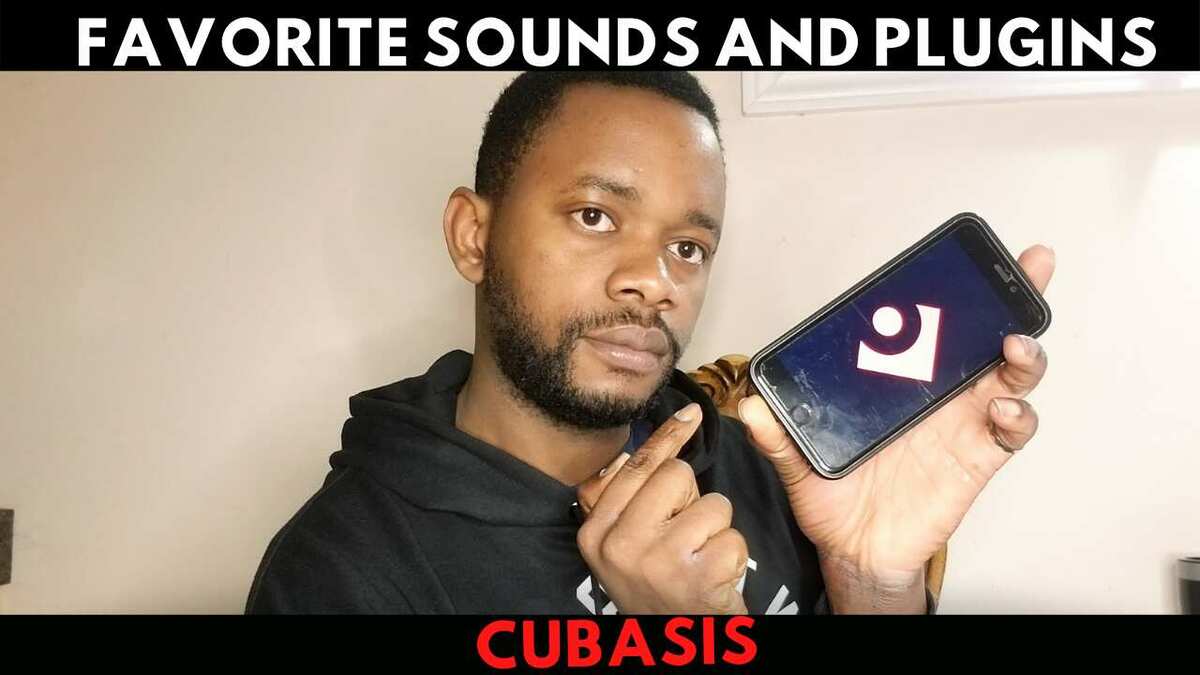Loopy Pro: Create music, your way.
What is Loopy Pro? — Loopy Pro is a powerful, flexible, and intuitive live looper, sampler, clip launcher and DAW for iPhone and iPad. At its core, it allows you to record and layer sounds in real-time to create complex musical arrangements. But it doesn’t stop there—Loopy Pro offers advanced tools to customize your workflow, build dynamic performance setups, and create a seamless connection between instruments, effects, and external gear.
Use it for live looping, sequencing, arranging, mixing, and much more. Whether you're a live performer, a producer, or just experimenting with sound, Loopy Pro helps you take control of your creative process.
Download on the App StoreLoopy Pro is your all-in-one musical toolkit. Try it for free today.
So, I'm sharing my thoughts, progress, and views on Cubasis 3 on this thread | Tracks Based Workflow
Decided to keep a concise thread for this topic, else I'd keep making a ton of posts.

I previously made a video sharing my thoughts about exploring a new workflow. Keeping up with this, I've started looking into Cubasis. I do intend on visiting the other DAWs and applications for the remainder of this year, but wanted to use this thread for Cubasis.
With that being said, here's the first video on Cubasis 3. Decided to look into the history of Cubasis, and an overview of the features that stood out to me.
Did you know that Steinberg made it possible for DAWs to have VST plugins? Also, the original Cubase was MIDI based? Take that, Nanostudio 2 haters ![]()
Previous posts




Comments
Yup.
I remember when they did that.
It was ground breaking.
Steinberg himself created vst link, if I remember correctly, whilst sitting on a plane.
Steinberg’s Cubase and Emagic’s Notator were the main stay of studios on Atari’s well into the 90’s.
Basement Jaxx’s “Felix Buxton” was still using his Atari
in 2002 as the midi timing was way better than what both
the Apple and PC platforms had to offer at the time.
Basement Jaxx is a well known British pop band from the early 2000’s.
I remember because I was working in the studio next door
he was impressed because I took in my self built PC and
he was contemplating getting either a Mac or PC.
He got a Mac in the end.
Steinbergs first foray into digital audio recording was on an Atari Falcon
and was one of the first affordable D.A.W’s around at the time.
I still have my Atari Falcon and my Atari STE I think.
They’re on a shelf in my music room.
I believe Steinberg also kind of invented midi or midi protocol so to speak. Could be wrong
No it was Ikutaro Kakeshi.
Dave Smith was also involved.
https://en.wikipedia.org/wiki/Ikutaro_Kakehashi
What Steinberg and Emagic did was utilise the midi ports
that were already inbuilt into Atari computers.
That’s why Atari’s were so popular as music making machines
for so long and they were also very stable.
Still are actually.
Atari’s were very affordable.
Not just VST, but they created ASIO also ! Originally asked by Microsoft to sort out audio I/O for windows, then Microsoft canned it at the last minute, Steinberg released ASIO anyway.
.
So was the original Logic!
Opcode released the first DAW with MIDI + Audio Sequencing, Studio Vision, in 1990. 32 years ago! Take that NS2 lovers
Another scary thought. Ableton Live is 20 years old.
Wrong.
The Australian Government created ASIO:
https://www.asio.gov.au/
Whoa, did not expect that. That’s awesome @Gravitas
Wait...the same Emagic that ended up becoming Logic Pro?
Haha 😆 @Simon
Yup - used to run multiple Atari STs on stage for live sequencing back in the 80s.
No worries.
Yup, the very same.
Notator became Logic because Emagic copied the arrange page
from their rival Steinberg and then Apple bought out Emagic and
Apple have only added to the very foundations of Logic since.
That’s why there is still the Environment page.
There’s more there.
Yamaha similarly bought out Steinberg.
Likewise though I only used one Atari and a drum kit with an occasional guest guitarist.
I used to use that setup for when I was composing for dance companies.
Very cool. We were sequencing all our keys, and had a second for a backup as the STs weren't quite built for touring. Sometimes they'd just freeze for no reason at all. Often, I could fix by simply picking up the ST and twisting it till I heard a pop (bad solder joints, I believe), then restarting. Fun times!
We were using it as early as '86, so it was before Cubase came along on the ST. We ran Hybrid Arts Edit/SMPTEtrack both live and in the studio.
Yup, had the same problem.
I used to pick my one up and drop it 1 inch which was the advice given to me.
One day I opened it up and it turned out it was cold solder joints on the power supply.
Took a soldering iron to it and that was that.
I’m sure I can still power mine back up.
I simply don’t have a monitor anymore.
Very cool.
I was doing the grave shift at S.A.E doing a recording session for
a band called Fin de Siecle and discovered the joys of sequencing
using notator whilst they were mixing and then decided to get an Atari.
Got an STFm first and Cubase and that was that.
I'm sure there's a few ol' timers that had MIDI Adapters that connected to their computers "game port".
O connected mine to a Commodore Amiga 1000 that had a Motorola 68000 chip and 256KB of RAM. No hard drive... just a 3.5' disk slot. I can't recall the name of the sequencer I used but it was something cheap and not the one of the expensive options like a Cakewalk, Digital Performer, Emagic, etc that competed in a small but growing marketplace for Electronic Music Production at home and in smaller studios.
This was from the 80's and 90's versions of "IBM" PC's based on the early Intel Microprocessors. They did not have the power to stream audio so MIDI was developed which is a serial protocol that operates over 2 wires (TX/RV). The audio processing was external hardware.
Overtime, PC adapters were created that had synth features and the Intel Chips and supporting disks, RAM and system busses could stream multiple tracks of audio. So, the early MIDI sequencing applications added audio features. There were dedicated audio applications that acted pretty much like 4 track tape machines... Vegas Audio, etc.
I'm looking forward to reading about @seonnthaproducer's thought on the current Cubasis 3 product for making modern style music.
So much for your thread, @seonnthaproducer - too bad as it has an epic title! I actually wanted to ask what's the difference between your thoughts on Cubasis and your views on Cubasis, as you are promising to reveal both in this thread.
- too bad as it has an epic title! I actually wanted to ask what's the difference between your thoughts on Cubasis and your views on Cubasis, as you are promising to reveal both in this thread.
A quote from wikipedia.
“ At the 1983 Winter NAMM Show, Smith demonstrated a MIDI connection between Prophet 600 and Roland JP-6 synthesizers. The MIDI specification was published in August 1983. The MIDI standard was unveiled by Kakehashi and Smith, who received Technical Grammy Awards in 2013 for their work.
In 1982, the first instruments were released with MIDI, the Roland Jupiter-6 and the Prophet 600. In 1983, the first MIDI drum machine, the Roland TR-909, and the first MIDI sequencer, the Roland MSQ-700 were released.The first computer to support MIDI, the NEC PC-88 and PC-98, was released in 1982.”
Here’s the link.
https://en.wikipedia.org/wiki/MIDI
Further more
Use with computers.
“The personal computer market stabilized at the same time that MIDI appeared, and computers became a viable option for music production. In 1983 computers started to play a role in mainstream music production. In the years immediately after the 1983 ratification of the MIDI specification, MIDI features were adapted to several early computer platforms. NEC's PC-88 and PC-98 began supporting MIDI as early as 1982. The Yamaha CX5M introduced MIDI support and sequencing in an MSX system in 1984.
The spread of MIDI on personal computers was largely facilitated by Roland Corporation's MPU-401, released in 1984, as the first MIDI-equipped PC sound card, capable of MIDI sound processing and sequencing. After Roland sold MPU sound chips to other sound card manufacturers, it established a universal standard MIDI-to-PC interface. The widespread adoption of MIDI led to computer-based MIDI software being developed. Soon after, a number of platforms began supporting MIDI, including the Apple II Plus, IIe and Macintosh, Commodore 64 and Amiga, Atari ST, Acorn Archimedes, and PC DOS.”
Affordable digital audio wasn’t added until much, much later.
It’s been quite fun adding in some of the history of Cubase.
It is quite epic.
I’m also waiting to hear @seonnthaproducer’s views.
We’re filling in the gaps whilst we wait.
View it as a movie interlude with historically context.
No worries, it’s been great reading through a lot of the posts on the history of Cubase. Helps give a greater appreciation for how music evolved.
As of now, I’ve used Garageband, Beatmaker 3, and Cubasis 3. I like Cubasis so far, as it provides a lot more MIDI tools than I was able to do in GarageBand.
I grew with the statement that it’s currently the best DAW on iOS (based on my limited use), but there’s still a lot more that it can’t do. I doubt I’ll use Cubasis the same way as I use GarageBand because I currently find it easy to quickly law down ideas on GarageBand, but that may change as I continue to work on it.
I think that’s the point of a DAW. To create alternate workflows...
That said, here's the second video. It's more tutorial based, so if you're already familiar with Cubasis, you can probably skip this.
">
link
So, I shared my final thoughts on using Cubasis here in this video.
">
link
I was ready to switch to Beatmaker 3. That said, a few days later, I heard a song from one of my favorite band, went to Cubasis and made a rough cover.
">
link
So, where I am at? I see Cubasis fitting my workflow, especially if I’m doing a full mix or mastering. Garageband is fantastic for laying down ideas, and I’ve been able to mix and master using it. What I like about Cubasis 3 is that I can add a lot more effects, do advanced MIDI and audio effects, had a mastering channel.
I’ll have to design a way to make the Garageband/Cubasis 3 faster. But that’ll take a bit of time. For now, I’ll look into Beatmaker 3.
That said, I’m not done with Cubasis. I still have a lot to test out. Especially as I have an older iOhone 6s+, and now an iPad Pro M1. Plus, I’ve been going through all the sounds, and plugins in Cubasis 3. Speaking of…
Watching the video, I'm finding it hard to see why you need to use Garageband at all. Is it the drummers, perhaps?
Great question @el_bo
Yeah, Cubasis seems to knock a lot of things out of the park. The things I miss in GarageBand from further use of Cubasis is
There’s a lot of downsides as well, but these are the things that I really like in GarageBand, based on my use of Cubasis. Cubasis does a lot better, I’ll admit.
@seonnthaproducer
Can we sync Garageband together with Cubasis 3?
I do know that Garageband can send out midi sync and MMC control
but I don’t know if Cubasis 3 can receive MMC control yet.
If they can then we can use the strengths of both using two idevices.
Hmm...that’s a good point. I doubt Cubasis receives it. From what I recall, Cubasis prefers to send out MIDI clock than receive it. Beatmaker, Zenbeats, and NanoStudio 2 seem to be different as they support Ableton Link.
I was thinking of approaching it a slightly different way. But I’ll have to research up on how the other DAWs work a little more.
I’ve just tried it, it can’t be done.
Cubasis 3 doesn’t send out MMC though Garageband responds to MMC.
They both send out midi clock but don’t receive.
A pity, so it’s exporting out stems from either DAW into the other.
BM3 also sends and receives midi clock and it syncs very well.
Tried and tested
I haven’t tied Zenbeats for sync capabilities.
Perfect. Wow, thanks for the reply.
@seonnthaproducer
No worries. 😁
So, I've spent the past few months using Cubasis and here are some of my favorite plugins and presets IN CUBASIS.
">
Yes, I did go through all the preset sounds in the Classical Drum Machine, and Microsonic, and wanted to share my thoughts on them.
link
Nice vid sir.
Honestly I love all the features and solid programming CB3 has, but I just wish it looked different. No idea why, but I loose all musical mojo whenever I see it. I guess I want Skins capability or something..
Thanks. I believe you can change the visuals to look similar to Cubasis 2 with the dark/light mode in the settings.
But I get where you're coming from. Visuals are a part of the creative process. I like Cubasis for finishing ideas on the go. Garageband still seems to be my comfort zone.